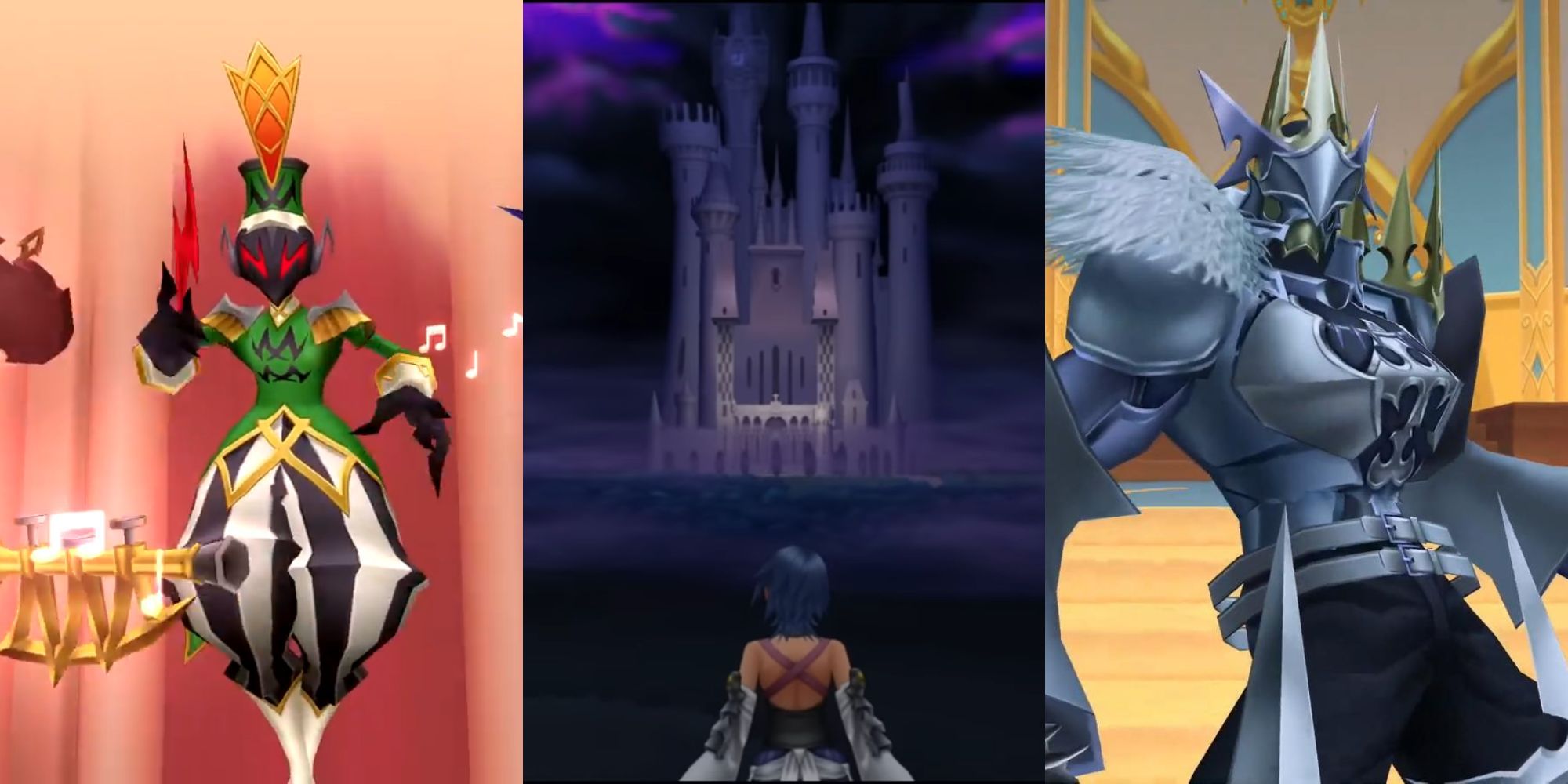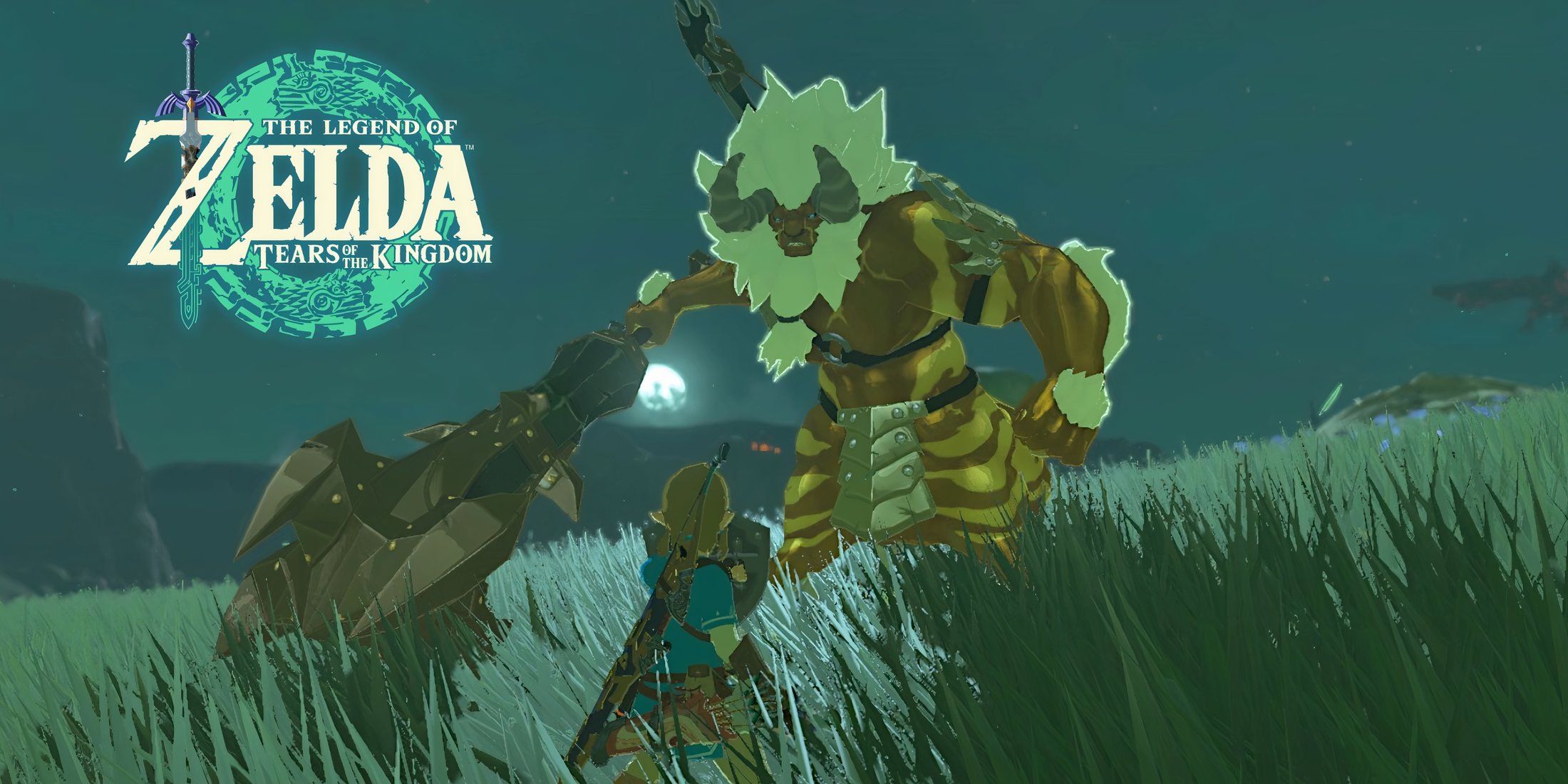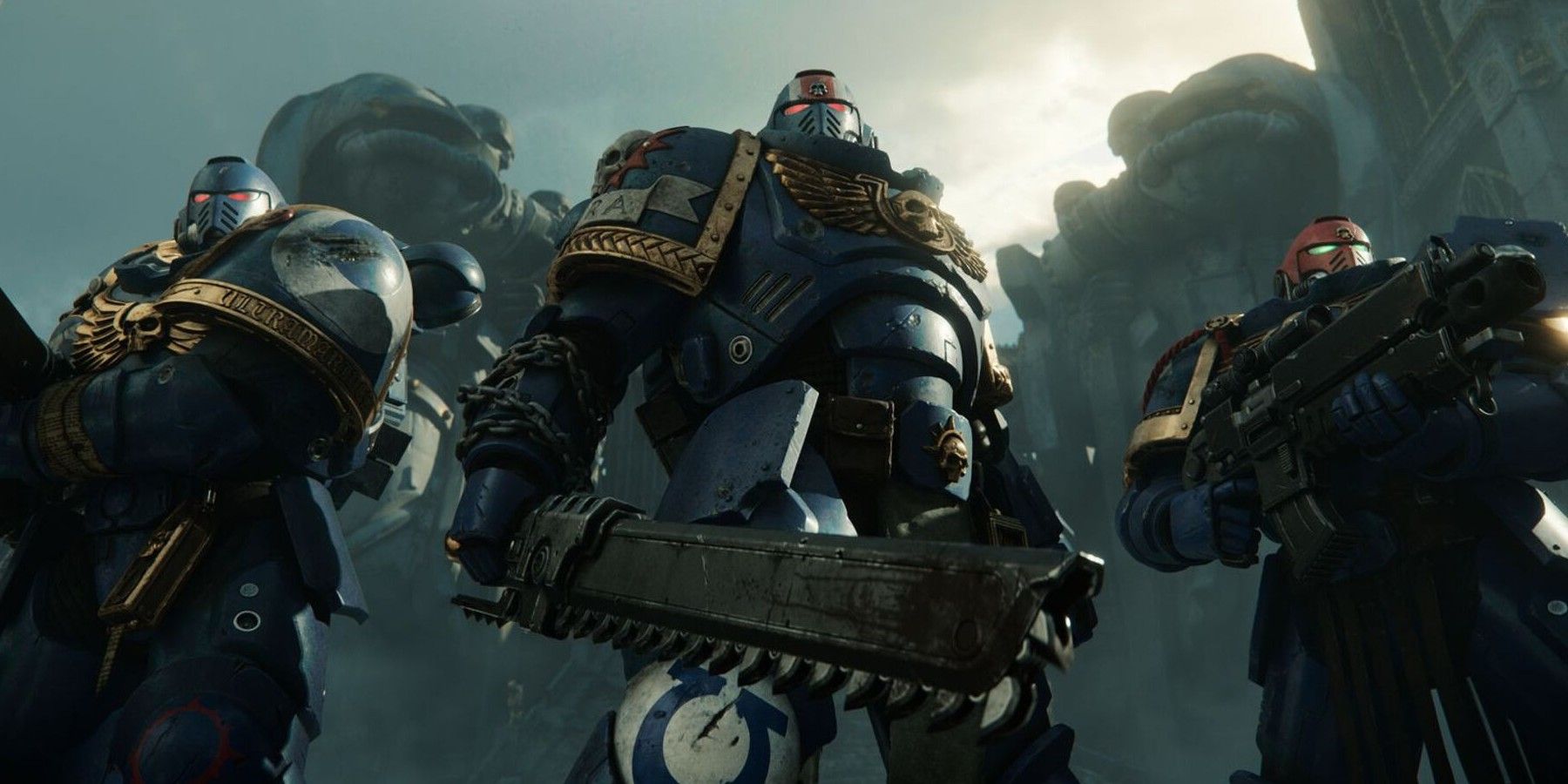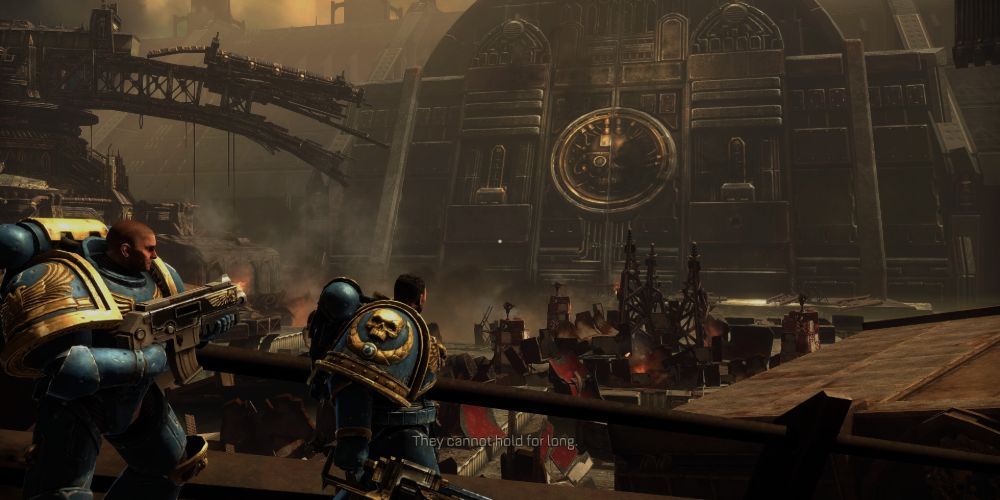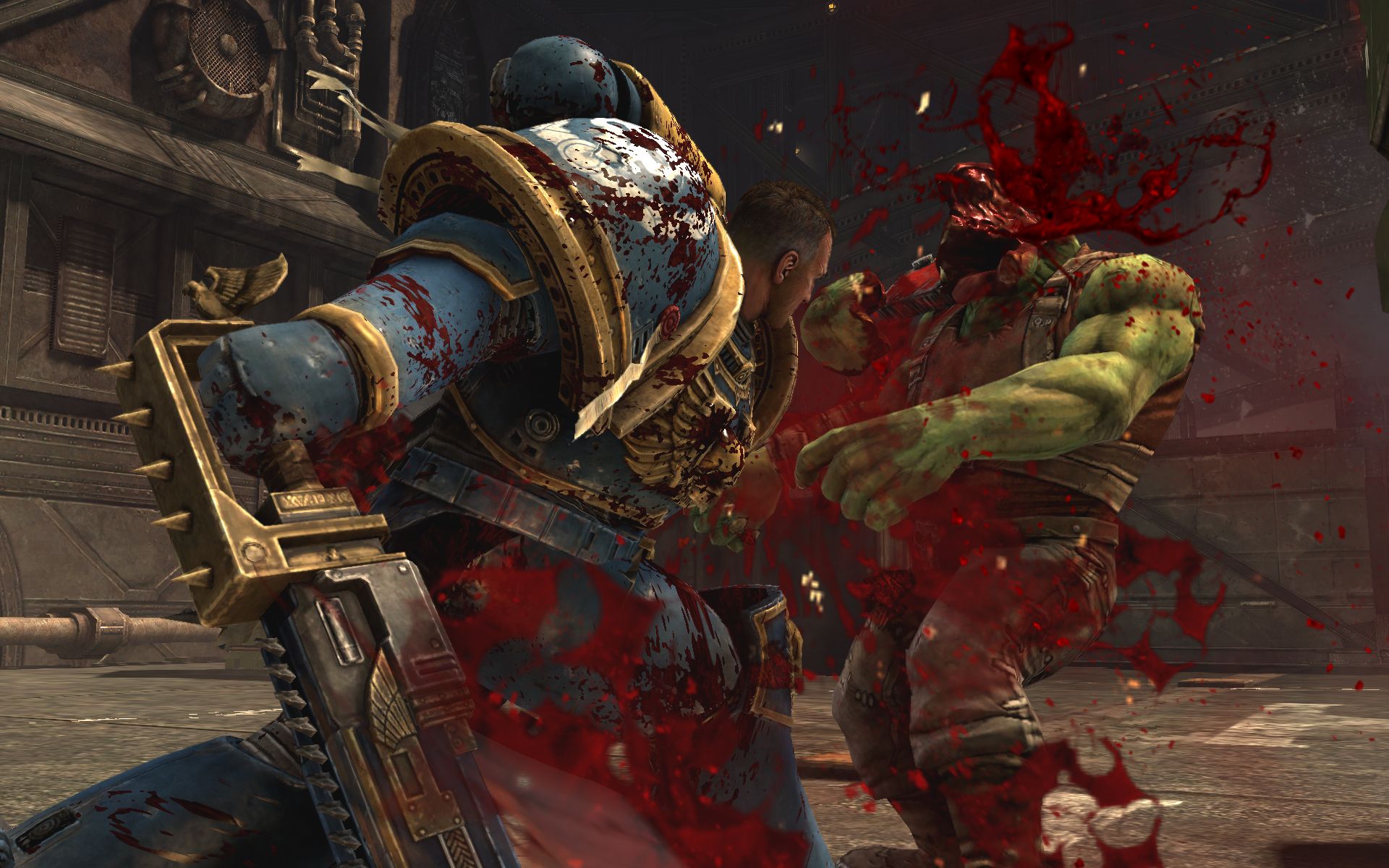Since its debut all the way back in 1987, Warhammer 40,000 has been one of the most popular tabletop games in existence. Blending high-fantasy and sci-fi, 40K takes its inspirations (Lord of the Rings, Dune, Star Wars etc.) and runs away with them into a dark, dingy, and depressing world where no one is the good guy. However, that's all part of 40K's unique charm.
It didn't take long for 40K to breach the world of video games, with the beloved Space Hulk video game adaptation hitting PC in 1993. Since then, 40K has had a continuous stream of video game releases, with multiple titles based on the franchise releasing every year. While not every 40K game is a hit, there are a few standouts, like the adored RTS Dawn of War or the recent tactics game Mechanicus. There is one game in the series that is infamous for being an underrated classic: Warhammer 40,000: Space Marine.
Space Marine: Truly Grim and Dark
Released in 2011 for the Xbox 360, PlayStation 3, and PC, Space Marine, while met with solid reviews, never really took off in terms of mainstream appeal. While fans of 40K quickly fell in love with the game, casual gamers weren't too hot on the title, with it coming across as simply a Gears of War clone. In actuality, Space Marine and Gears of War have only surface level similarities, largely boiling down to a third-person camera, and chainsaw weapons. Beneath its surface, Space Marine is actually a fairly engrossing third-person hack-and-slash/shooter hybrid that perfectly encapsulates the grimdark horror that is the 40K universe.
Players take control of Captain Titus, a "Space Marine" that's a powerful, genetically-enhanced super soldier. Titus is tasked with enforcing the will of the Emperor of Man (the ruler of the Imperium, which is the universe's governing "human" body.) The initial set-up for Space Marine is extremely simple; a Forge World has been attacked by an army of Orks, and a squad of Space Marines are sent to retake the factories and push back the Ork forces. This set-up works perfectly for this game, allowing outsiders of the 40K franchise to easily understand the general plot and the key factions at play, while giving fans of the series some interesting details to dissect.
This perfect blend of accessibility and fan-service is present throughout the entirety of Space Marine, with the general plot continuing to be simple and easy to follow, while introducing elements of the universe that fans will already recognize. For example, after securing a giant mech known as a Titan, the squad of Ultramarines are tasked with locating an Inquisitor named Drogan. To newcomers of the series, this simply acts as a new, clear objective. To fans of the franchise, an Inquisitor being present on the planet infers that the Chaos faction might make an appearance, therefore making their eventual reveal feel more rewarding.
These little tidbits of lore and fan-service are sprinkled throughout the game, continually rewarding long-time fans of the series with additional world-building, all without leaving newcomers behind. It could be argued that this aim to balance fan-service and accessibility led to the game's relatively cheesy and half-baked narrative and themes, at least compared to some of 40K's best stories. However, striving to hit that balance has made Space Marine a timeless game that acts as many fans' introduction to the vast series.
A Bloody and Brutal Action Game
Space Marine's accessibility doesn't stop at its narrative, however. The core gameplay of Space Marine uses a simple but effective mix of third-person hack-and-slash melee combat, as well as third-person shooting mechanics. While some critics of the game pointed out that mixing the two elements led to neither one feeling fully fleshed out, fans of the game have come to love the mix of combat styles. Fans claim that it gives the game variety, with the game's continuous supply of unlockable weapons also furthering the variety of gameplay on offer.
However, Space Marine's real gameplay draw isn't the mechanics themselves, but what those mechanics allow players to do. Simply put, Space Marine is a bloody, brutal, horrific power fantasy come to life, and that's a big selling point for 40K fans. With just a single tap of a button, players are able to shred through hordes of Orks, turning them into fleshy chunks of viscera within seconds with their iconic Astartes Chainsword. Thanks in large part to the game's great audio design and visual effects, ripping through wave after wave of enemies never loses its grim, satisfying appeal.
This core gameplay loop may get stale for newcomers to the franchise, especially if played today, but to fans of the series this type of visceral action perfectly encapsulates the Warhammer 40K tabletop experience. The imagined brutal action of the tabletop game is amicably translated into a tangible, realistic video game experience. By all accounts, from narrative, to character and atmosphere, Space Marine is well and truly an honest and faithful 40K adaptation.
While it may not have been the most critically or commercially successful video game of all time, or even of 2011, Warhammer 40,000: Space Marine is still widely regarded as one of the best 40K video game experiences to date. Its dark and brooding atmosphere, its accessible nature, its satisfying gameplay loop, and its fan-service all come together to make it the perfect entry point for new fans, as well as a faithful 40K experience for series veterans. It might take a bit to outdo the original, but Saber Interactive seem like a good choice for the upcoming sequel, with their almost two-decade-long history in the video game industry.
Warhammer 40,000: Space Marine is available now on PC, PlayStation 3, and Xbox 360.

